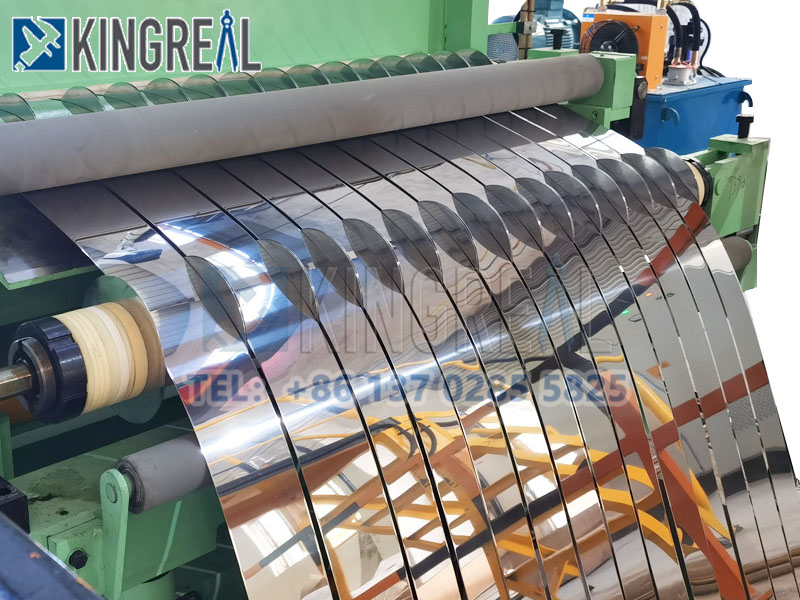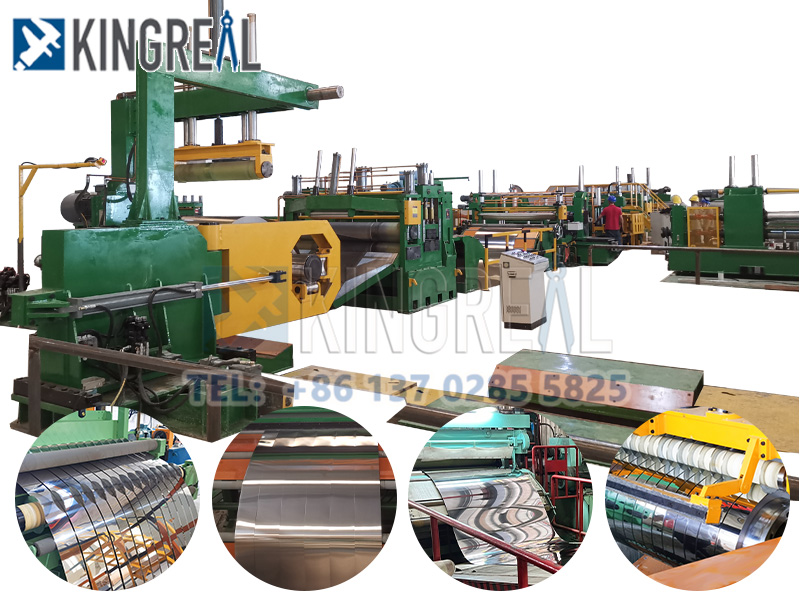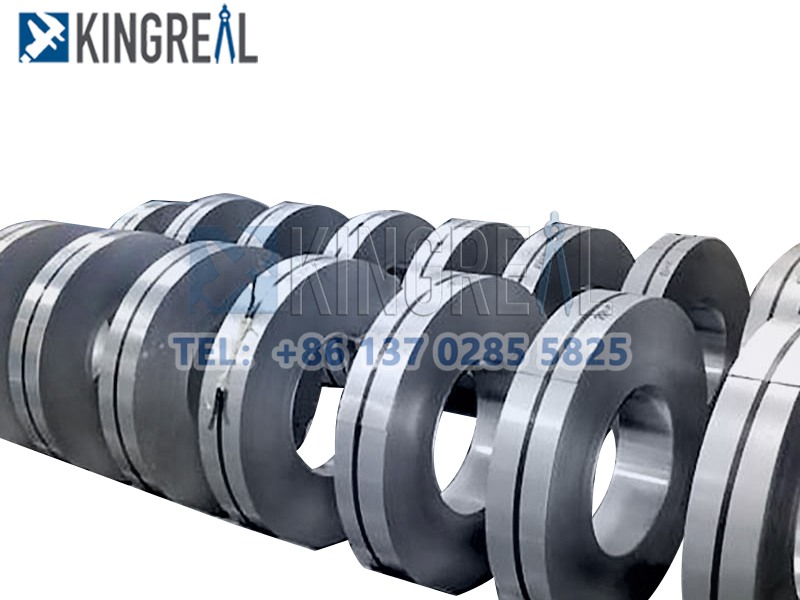How to slit the coils?
Coil slitting operations play a vital role in many industries, especially sheet metal manufacturing. But what does it require and how does it work? This article will tell you.
What is coil slitting?
Coil slitting is the process of cutting wide metal coils, such as steel, aluminum, copper, and brass, into narrower strips using a coil slitting machine or coil slitter. While it might seem like a straightforward task to cut wide material into narrower parts, producing metal coils with optimal precision involves careful consideration of various factors and processing techniques.

How is a Slitting Machine Formed?
A coil slitting machine consists of a production line that includes various components: a decoiler, a leveler, a sheet metal slitter, a scrap winder, a tensioner, a recoiler, and an unloading device.


1. Decoiler
The decoiler, also known as the uncoiler, is the first part of the machine. It allows metal coils to be fed into the coil slitting machine as flat metal sheets. Proper setup of the decoiler is crucial for the success of the slitting process.
To set up the decoiler correctly, parameters such as the weight, width, thickness, inner diameter, outer diameter of the metal coil, and the delivery speed of the coil must be considered. A mismatch in any of these parameters can lead to failure in the slitting process.
For example, if the metal coil is fed faster than the coil slitting machine can cut the metal sheets, the sheets may not remain flat, potentially causing curvature in the metal coils. Therefore, correct decoiler setup is the initial step in the coil slitting process.
2. Sheet metal slitter
The sheet metal slitter refers to the cutting blades in the coil slitting machine. It is positioned in the middle of the production line and operates as the second stage after the metal sheets have been uncoiled.
The sheet metal slitter consists of a series of circular blades arranged in a row with equal spacing. After the metal coil is uncoiled into metal sheets, these sheets are fed to the top of the sheet metal slitter for cutting.
The total width of the metal sheets corresponds to the blade series, and the spacing between each circular blade determines the width of the final product, which are the narrower metal coils. Like the decoiler, small deviations in the sheet metal slitter setup can significantly affect the final product. For example, the total width of the metal sheets should match the total width of the blade series. If the sheets are narrower than the blades, they may not fit perfectly or might be distorted. Conversely, if the sheets are wider than the blades, they may not feed properly into the sheet metal slitter for cutting.
Additionally, the spacing between each circular blade should be evenly distributed as it determines the width of the cut coils. Both manufacturers and customers prefer uniform-sized products, making the precise setup of equidistant blades crucial.
3. Recoiler
The recoiler is the final part of the coil slitting machine where the cut metal coils are wound up again. After the coils are cut, they need to be rewound into coils with the help of the recoiler.
The operation of the recoiler is the opposite of the decoiler. Parameters such as the weight, width, thickness, inner diameter, outer diameter of the metal coil, and the delivery speed of the coils need to be followed, just like with the decoiler.

How Does Coil Slitting Work?
Coil slitting involves cutting wide metal sheets into narrower strips, thereby producing narrower metal coils for further application by customers. The slitting process can be broken down into three simple steps corresponding to the number of components: uncoiling the metal sheets, cutting the metal sheets, and recoiling.
1. Uncoiling the Metal Sheets
As the name suggests, this process occurs on the decoiler. When the wide metal coils are set with consistent width, inner diameter, outer diameter, and decoiler speed, the decoiler begins to feed the metal sheets onto the conveyor and then to the sheet metal slitter.
2. Cutting the Metal Sheets
Once the metal sheets are uncoiled and fed to the sheet metal slitter by the conveyor, a series of sharp circular blades positioned beneath the metal sheets start cutting them. In addition to the parameters followed by the decoiler, the cutting motion is provided by the compression force of the sheet metal slitter.
As the metal sheets are fed onto the blades, the sheet metal slitter applies a compression force to cut the sheets. This force determines the width of the final narrower coils based on the spacing between the blades.
3. Recoiling
After the metal sheets are cut into narrower strips, they are transferred to the recoiler, the last station of the coil slitting machine. Once the recoiler receives the metal coils, it assists in rewinding these coils, completing the final product.
In this process, the delivery speed of the coils is crucial. Since the cut coils are still long, maintaining a consistent speed as they are fed to the recoiler will determine the quality of the final coils. Therefore, operators need to monitor and adjust the machine during the slitting process to ensure smooth operation without issues.
(1).jpg)
Hope this article will help you understand the coil slitting machine, if necessary, please contact us!


(1).jpg)
Hope this article will help you understand the coil slitting machine, if necessary, please contact us!








 +86-137 0285 5825
+86-137 0285 5825  sales@kingreal.org
sales@kingreal.org jet-clima
jet-clima